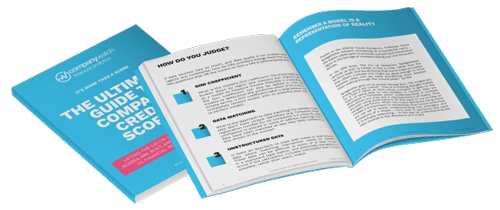4 Strategies for Effective Supply Chain Risk Management

Effective supply chain risk management is key to driving success and improving business outcomes. According to the Harvard Business Review, strategic supply chain risk management can lead to improved financial outcomes, the avoidance of bad debt, and lower chances of supplier failure.
This is more likely when these portfolios are managed by experienced professionals. Company Watch’s portfolio management software is designed to monitor financial risk exposure and stay on top of any sudden changes or inconsistencies.
Read on to find out more about what supply chain risk management is and how to monitor your portfolio strategically in turbulent times.
What is supply chain risk management?
Supply chain risk management is the act of identifying, assessing, and mitigating financial risks that could disrupt the supply chain. It is a proactive process and involves the implementation of robust strategies to safeguard against the major supply chain risk factors (outlined below). With the right data analysis, risk assessment tools, and collaborative partnerships, you can build a secure and sustainable supply chain.
Often, supply chain risk management involves monitoring a vast portfolio of suppliers. To that end, good portfolio management can lead to effective supply chain risk management by optimising portfolio performance to mitigate financial risk.
What is portfolio management?
Portfolio management is the strategic project of monitoring, allocating, and prioritising within a portfolio to achieve certain financial goals and develop a comprehensive picture of the procurement needs of an organisation. A major part of project portfolio management involves making smart business decisions based on risk exposure assessments, profit warnings, and various other factors.
With the right KPIs and a holistic portfolio management strategy in place, businesses are able to reduce their financial risk and grow their business strategically in the process.
What are KPIs in portfolio management?
Key Performance Indicators or KPIs are essential metrics that you need to improve the performance of your portfolio. These metrics allow you to track returns on investment (ROI) and supply chain risks. With the right KPIs in place, you can make a judgement about overall portfolio performance and decide on what rebalancing risk should look like.
What are the 4 key risks in supply chain risk management?
1. Economic risks
These can include changes in currency exchange rates or sudden economic recessions. Weak supplier financial health, and possibly even insolvency, is another issue that could become a major source of risk. Furthermore, high inflation may increase operational costs and impact pricing strategies.2. Environmental risks
A string of environmental regulations and restrictions can cause major supply chain disruptions. According to Climate.gov, since 1982, the rate of global warming is more than three times as fast as it was before. This means that natural disasters are more likely to occur over the next few decades. These may seriously impact transportation and supply availability.
For instance in 2023, extreme heat and drought brought disastrous wildfires to Greece. Not only did they result in a tragic loss of life, the fires also destroyed infrastructure, including roads and transportation hubs. This led to major disruption in the movement of goods. Businesses were shut down, and the disruptions caused ripple effects in international supply chains.

3. Political risks
With geopolitical instability on the rise globally, it is important to think about what this means for supply chain risk. Conflicts and terrorism can impact the cost and availability of imported goods, and as a result, disrupt supply chains. Any regulations resulting from conflict can also cause disruptions.
For example, the ongoing Russia-Ukraine war has had catastrophic effects on supply chain services. A lot of the world’s wheat, corn, and sunflower oil comes from Ukraine. The war has caused shortages of these and other goods in parts of the world that rely on them as a vital source of their food supply.
Similarly, the ongoing Israel-Gaza conflict could have a major impact on two key shipping choke points - the Suez Canal, a major route for commercial container ships, and the Strait of Hormuz, vital for oil and gas shipping.
4. Ethical risks
Supply chains constantly face ethical risks e.g., labour exploitation, unfair working conditions and low wages. There may also be some concern around the sustainability of sourcing practises and production processes. For instance in 2013, a garment factory collapsed in Bangladesh, killing over 1100 workers. This highlighted the risk and poor ethics associated with outsourcing production to low-cost regions.
How to monitor and manage supply chain risk
An effective supply chain risk management strategy aims to build an accurate profile of your suppliers to mitigate financial risk. There are a few tried-and-tested ways to ensure that this happens. Read on to find out about the most fool-proof supplier portfolio management strategies.
1. Robust risk management
Economic upheavals, climate change, changes to regulations, and financial fraud are just some factors that may impact procurement projects. This makes it crucial for stakeholders to have an iron-clad risk management framework in place. A good framework identifies risk factors, gauges the impact they may have, and includes comprehensive contingency plans. Regular updates to such frameworks are crucial to ensure that the frameworks are effective when needed.
Managing financial risk on your own can be a daunting task, especially when you’re unsure where to start from. At Company Watch, our intuitive portfolio management software enables you to analyse the overall risk profile of a group of businesses, and view your current risk exposure across your supplier portfolio.
2. Data-driven decision making
Quality data is the key to effective supply chain risk management. You can use insights from data analysis to track portfolio performance and mitigate financial risk. It is crucial to use the right tools and metrics to analyse the data effectively and build a more robust supply chain.
We have developed a cutting-edge fraud prevention tool called Vigilance™, which automatically analyses a company’s filing data and identifies any red flags or inconsistencies in this data that you should be aware of. With the increased use of AI, it is becoming easier to create fake data and falsify business information. This means that you can’t be 100% sure that the data you are working with is genuine. Vigilance™ is able to flag any suspicious or inconsistent data so you can avoid unnecessary supplier risk and reduce bad debt.
With Vigilance™ email alerts, you can also get real-time updates directly in your inbox so that you never miss a risk and remain proactive in your risk management.
3. Stakeholder engagement
Often, various stakeholders need to be brought onboard for buy-in and collaboration during procurement projects. These may be elected officials, members of internal departments, or others. The type of stakeholders will depend on the industry you are working within.
Stakeholder engagement involves maintaining an open line of communication, receiving and implementing expert advice and input where appropriate, and building an environment of mutual trust throughout.
4. Proactive supply chain risk management with Company Watch
Manual portfolio monitoring and management runs the risk of mistakes and inaccuracies. Company Watch’s holistic supply chain risk management software allows you to easily track companies, manage risk exposure, and stay on top of any fundamental changes or anomalies, all under one roof. You can also receive daily email alerts when something changes, ensuring you always stay one step ahead of risk.
Find out how our client, Ian Selby of Nexus Trade Credit, uses our portfolio management solution to manage a large list of insureds here.
Try our supply chain risk management software for free and discover how it can help you safeguard your business against supplier failure.
If you’d like to know more about Company Watch and the solutions we offer, please get in touch. You can also catch us next month at the DigiGov Expo, taking place in the Excel Centre London. DigiGov takes place on the 24th and 25th September, and is a platform for public sector experts to collaborate and share industry insights.

